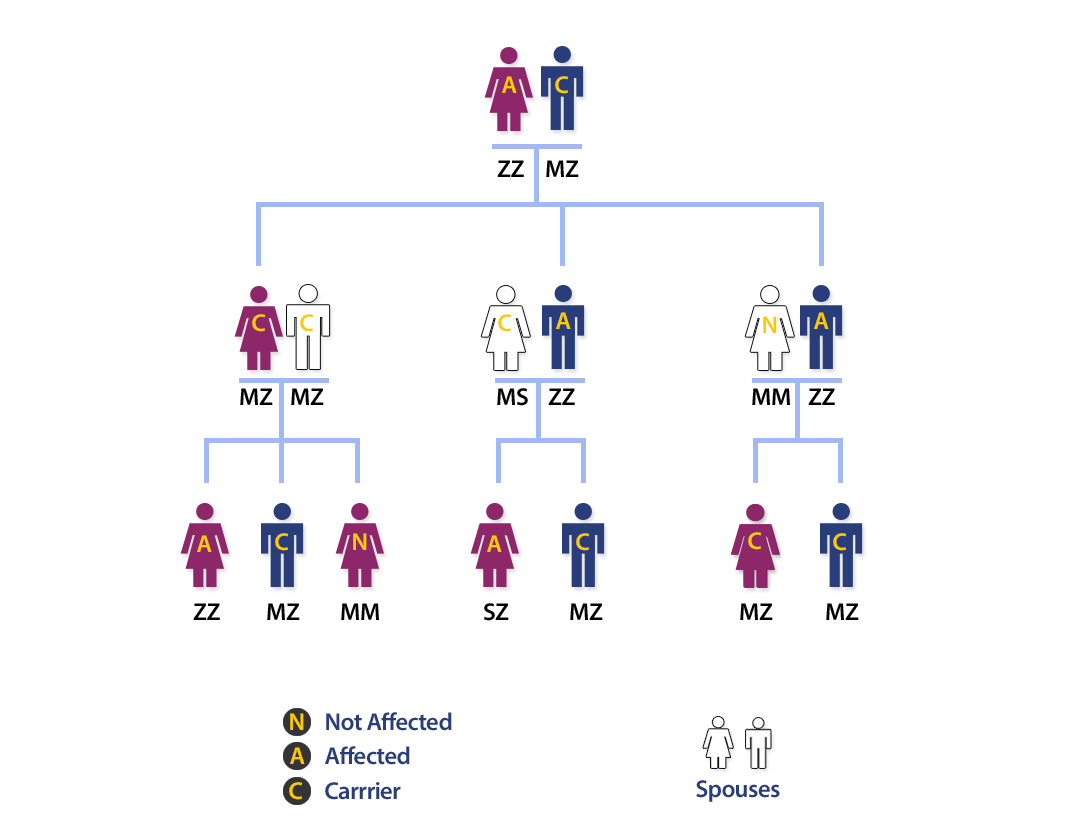Alpha-1 Antitrypsin Deficiency is based on your genes. There are many mutations in the Alpha-1 gene. Many cause no issues. “M” is the name of the normal gene. “Z”, “S”, “I” and “F” genes in combination or together with a normal gene result in some deficiency of Alpha-1. There are even genes that cause the liver to produce no protein. The diagram below shows a few options for gene inheritance.
- The initial parents are a severely deficient “ZZ” Alpha, labeled as “A” for affected and the male partner, an “MZ” is labeled “C” indicating a carrier of one abnormal gene.
- Their children would all inherit one “Z” from their mother but can inherit an “M or a “Z” from their father. Two of the children are shown as “ZZ” and one as an “MZ”. This is a hypothetical model. Each child has an equal chance of inheriting an “M or a “Z” from their father.
- Since all of the children carry at least one abnormal gene, the grandchildren of the first couple could always inherit a “Z” gene. This is why genetic testing is important. In the example below, out of the seven grandchildren, two are “ZZ” Alphas, four are “MZ” carriers and one is “MM” and not affected by Alpha-1 Deficiency and is labeled “N”.
Note that for the original parents at the top of the tree, Mom is a ZZ and Dad is an MZ. Their children could be MZ or ZZ. Their biological children could NOT be MM.
The following graphic explains how family genetic makeup impacts how Alpha-1 is inherited.

To learn more about the genetics associated with Alpha-1, visit the Big Fat Reference Guide to Alpha-1 (BFRG). If you are enrolled in AlphaNet’s Subscriber Portal, you can access the BFRG at subscriber.alphanet.org.
To find information about genetic counseling for Alphas, please visit alpha1.org/genetic-counseling.